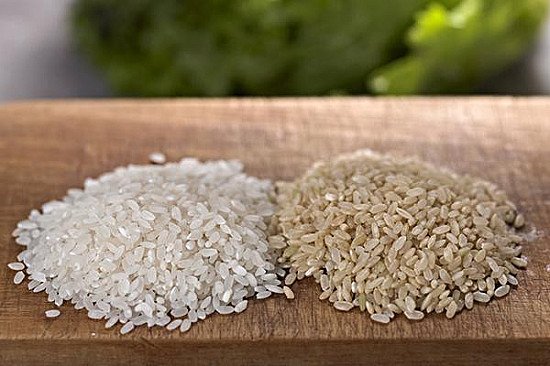[ad_1]

You can find rice in a rainbow of colors: purple, black, gold, red, brown, and, of course, white. But when faced with the decision between brown rice and white rice, how do you know which one to choose?
What is the difference between brown rice and white rice?
The difference between the two is not limited to color. It’s also about how they are treated.
Brown rice is a whole grain, which means it contains all three components of the grain: bran, endosperm and germ.
When white rice is processed, it is stripped of the bran and germ. The remaining endosperm is starchier and less nutrient rich than the whole grain.
White rice generally cooks faster than brown rice.
Nutritional Comparison: Brown Rice vs. White Rice
Both brown rice and white rice can be part of a healthy diet. But because brown rice retains the bran and germ, it is richer in nutrients than white rice. For example, brown rice provides more fibermagnesium, potassium, ironand certain B vitamins (B1,B3,B6and B9) than white rice.
White rice is easier to digest, in part because it contains less fiber. This can be beneficial for some people at certain times. For example, people with irritable bowel syndrome Or inflammatory bowel disease They may need to monitor the amount of fiber they consume during flare-ups of these conditions.
But if you’re otherwise healthy, a diet rich in fiber-rich whole grains — including brown rice — is associated with a number of health benefits, including a reduced risk of heart disease and diabetes type 2, as well as weight management.
The glycemic index: how brown rice and white rice compare
THE glycemic index (GI) is a rating system that ranks foods from 0 to 100 based on how much they raise blood sugar levels. The lower the GI score of a food, the slower and slower your blood sugar rises after eating. The glycemic index is especially important for people with diabetes, who are more likely to experience rapid, high spikes in blood sugar than those without diabetes.
White rice has a high glycemic index, around 73 ± 4. Brown rice is classified as a medium glycemic index food, with a GI of 68 ± 4.
Consumption of white rice is also associated with a higher risk of developing type 2 diabetes, while consumption of brown rice is associated with a lower risk.
Calorie comparison
The calories in brown rice and white rice are similar.
- One cup of cooked medium-grain brown rice contains 218 calories.
- One cup of cooked medium-grain white rice contains 242 calories.
The bottom line: Is brown rice healthier than white rice?
Brown rice, which contains more nutrients and fiber and has a lower glycemic index, is a healthier choice for most people. But if you’re suffering from a flare-up of digestive issues that make it harder to digest fiber, white rice may be a better option for you, at least until your symptoms improve.
[ad_2]
Source link
